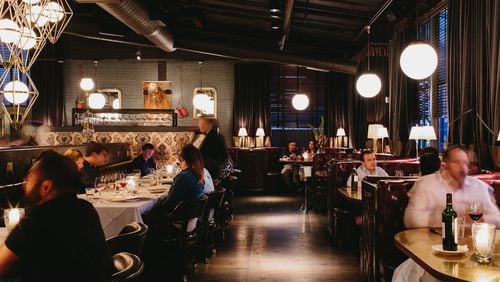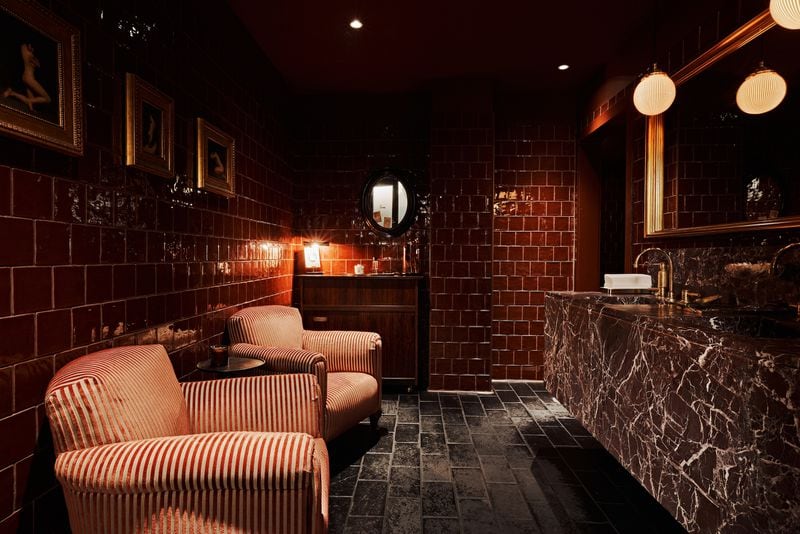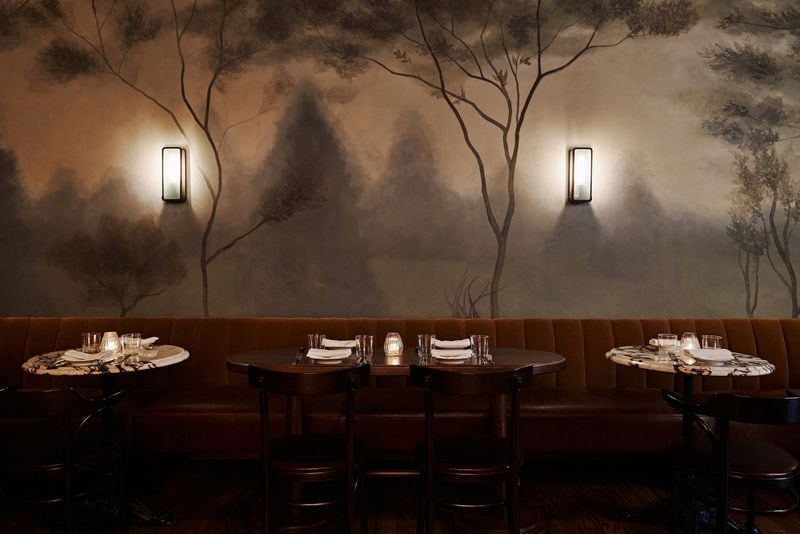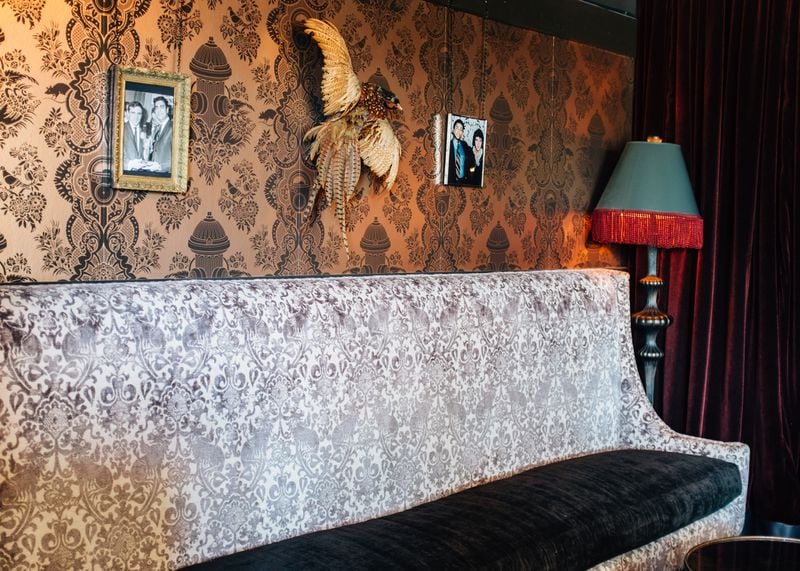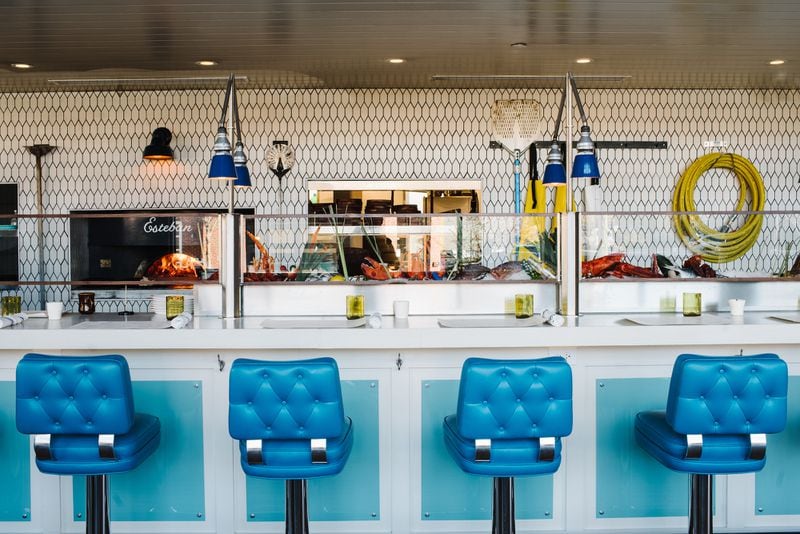It’s hard to enter a Ford Fry restaurant without being instantly hit with a powerful sense of place.
From Superica at Krog Street Market to No. 246 in Decatur, the Atlanta chef’s spaces brim with personality and warmth. If every home interior is an expression of its owner’s personality then Fry’s restaurants suggest a man able to channel nostalgia, memory and a lifetime of experiences into evocative spaces.
“Ford is very much aware of how ‘story’ permeates a space and gives people kind of an identity when they’re in the space,” said designer Elizabeth Ingram, who has worked with Fry on Marcel, Superica and BeetleCat and who also happens to have a background in movie set design. Ingram likens Fry to an auteur in the mode of Wes Anderson or Francis Ford Coppola, for whom every project is different though there is a through-line and identity seen in all of their work.
In fact, Fry’s restaurants are often like visiting a show home or designer’s atelier, where the design envelope is pushed in a very satisfying way. As his career has developed, his spaces have become more immersive and design-driven.
Credit: Handout
Credit: Handout
Inspired by Brooklyn taverns and French brasseries, Fry’s latest effort Little Sparrow, designed with another frequent collaborator, Atlanta interior designer Smith Hanes, is named after French chanteuse Edith Piaf. Little Sparrow doesn’t shy away from a classic bistro vibe with its paleo-be-damned indulgent mix of baguettes, frites with melty raclette cheese, an onion soup gratinée top-loaded with gruyère, (dairy is a Fry leitmotif), duck liver mousse and old-fashioned chicken schnitzel. The design, which mixes vintage and custom, is similarly rich and swoony, boasting a zinc bar, marble tabletops, grape cluster pendant lights sketched by Smith Hanes and created by a local artisan, caramel leather barstools, vintage tin ceilings sourced in New York and a restroom so dark and atmospheric you might need to whip out your iPhone flashlight for wayfinding.
Like all great design, from our homes to our favorite hotels, the vibe is a mishmash of the Roaring Twenties and the 1970s — all the good stuff Osterized into one satisfying whole.
The front and center speakers at Little Sparrow are by Ryan Hancock studio, “fashioned out of oak and stained to resemble small speakers from the ‘60s or ‘70s. The speakers have linen fabric over the woofers and tweeters and are hung from the ceiling as one would expect them to have been hanging in someone’s den from that era,” Hanes said.
Credit: Handout
Credit: Handout
“I wanted it to feel like you were stepping into a classic brasserie, and the vintage speakers are my favorite part — playing a strategically thematic soundtrack, making you feel like you’re walking into a whole different era,” said Fry, who moonlights as a musician and believes deeply in the ambiance-stoking abilities of a great playlist.
“Ford and also Sean Sullivan, his VP of experience, are so dedicated to that level of storytelling/set directing and upkeep,” said Ingram.
Like method actors given a backstory to better play their characters, Fry spaces are the manifestation of a storyline. In the case of Marcel, the luxe French-inspired restaurant on the Westside, the backstory is available in a design “storybook” in the waiting area. Inside are photos, text and even design sourcing courtesy of that restaurant’s designer, Ingram. “We just kept layering and layering and layering,” she said, “which allowed for a very rich experience, a way for people to want to discover more and more every time they go back.”
Credit: Jeremiah Cowan
Credit: Jeremiah Cowan
Though the design was created in a record four months, said Ingram, “the idea was to have a restaurant that was new, but one that looked like it had been here for almost a century.”
Fans of the clever wallpaper, Flavor Paper’s City Park, will be glad to learn they, too, can buy the damask-inspired pattern decorated with fire hydrants, parking meters, rats and pigeons and other urban denizens for their own spaces. Harder to come by are the one-of-a-kind family photos, sourced from antique stores, that decorate the walls. The theatrical details at Marcel extend to the ladies room where at various times you’ll find a candy jar of mints, nail files and bobby pins on top of a vintage dresser, as if you’ve stumbled, in a space-time continuum, into your grandmother’s bedroom.
Credit: Andrew Thomas Lee
Credit: Andrew Thomas Lee
Ingram’s design for BeetleCat was similarly experience-driven. “The basement is meant to be sort of a ‘70s swinger pad/rumpus room for kids/stoners basement that I knew as a kid. It also played into that nostalgia for the ‘70s that I believe Ford had as well.”
The devil is in the details for Fry and his team, said Hanes, exemplified by the plaster walls and slow-moving fans at Fry’s Greenwich Village-inspired Italian restaurant No. 246. In an era when smoking will mark you as an untouchable, Fry still leaves out dishes of old school matchbooks. The red-tipped matches in a seafoam book at Little Sparrow are a high-water mark, designed by Alvin Diec of Atlanta-based Family Bros., who has lacquered the city in his cheeky, retro-inspired graphics and fonts. If you’ve gone somewhere cool in Atlanta and noticed the menu illustrations or restaurant mascot, you’ve experienced a Family Bros. love bomb.
Autobiography plays a big part in Fry’s spaces. The six Atlanta Superica locations are inspired by Fry’s time living in Austin, Texas. Childhood travel with his gallivanting grandparents across America and Europe were an early education in the pleasures of, as Fry calls it, “fancy food.” A comforting sticky toffee pudding, baked Alaska and a chocolate layer cake channel that nostalgia for formative childhood dining experiences in the Marcel menu.
“He’s not afraid to have fun,” said Fry’s longtime designer Hanes, “and take you out of the doldrums of your day.”
Felicia Feaster is a longtime lifestyle and design editor who spent 11 years covering gardening, interior design, trends and wellness for HGTV.com. Felicia is a contributor to MarthaStewart.com and has been interviewed as a design expert by The New York Times, Forbes and the Associated Press.
